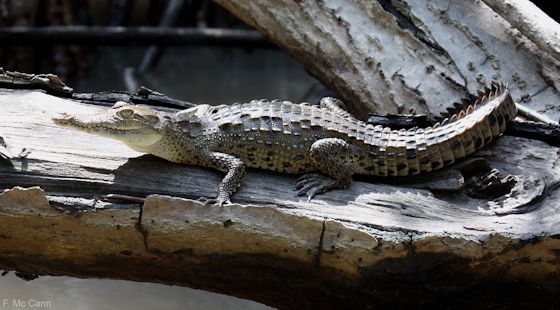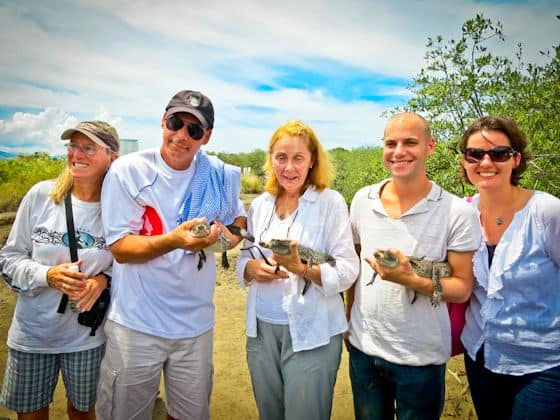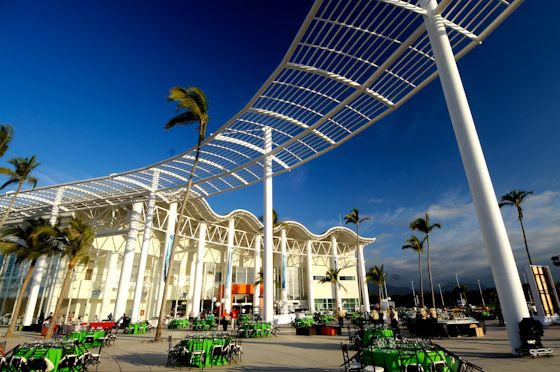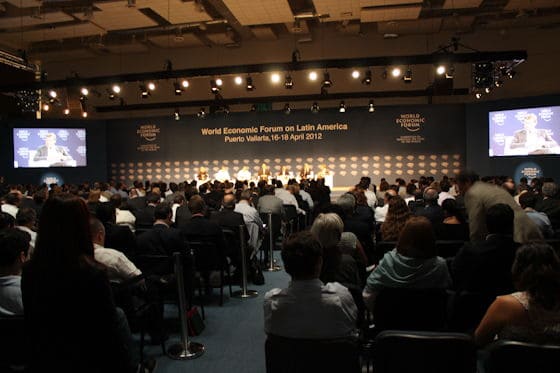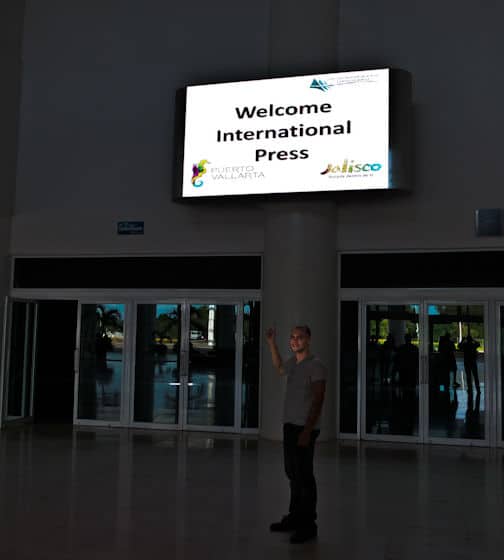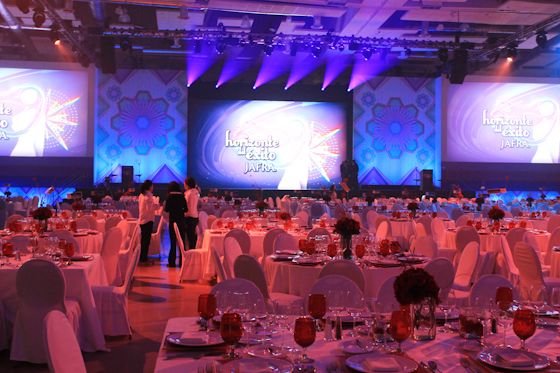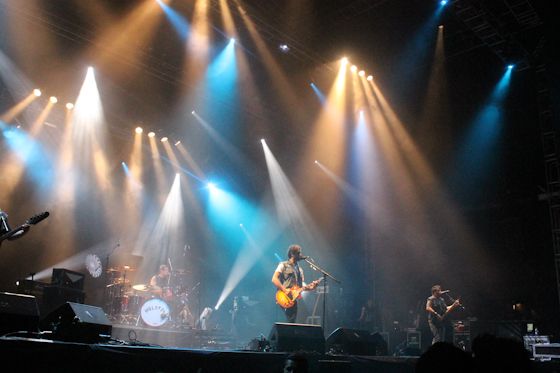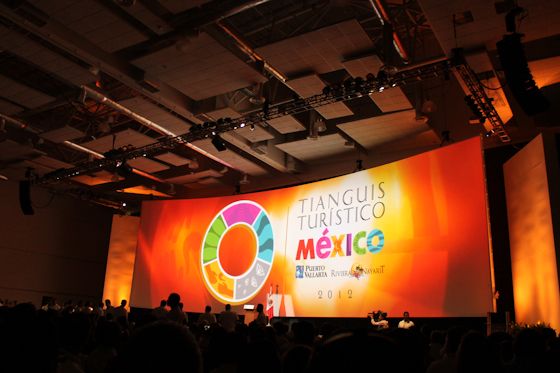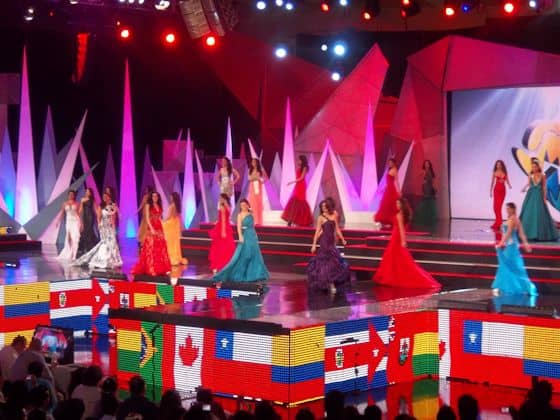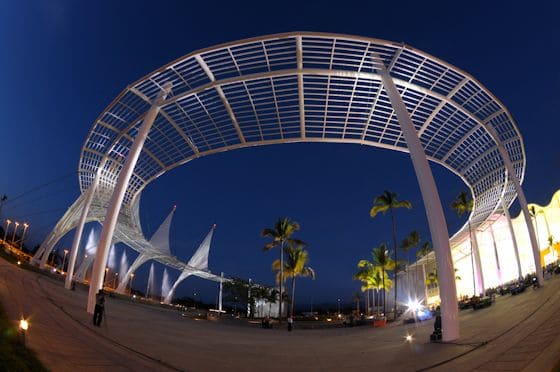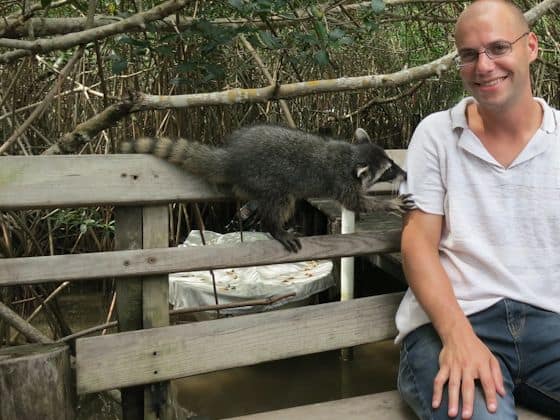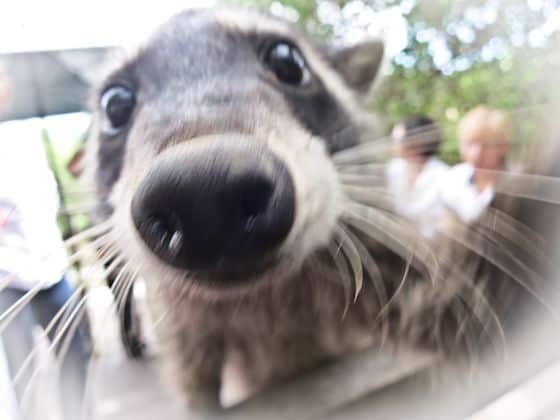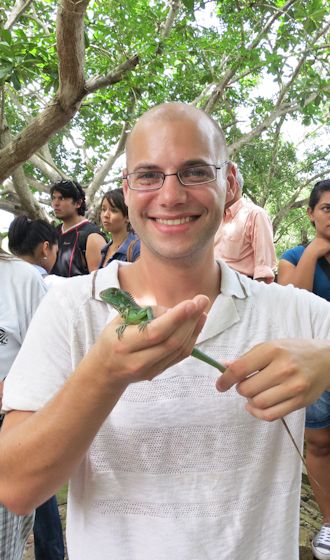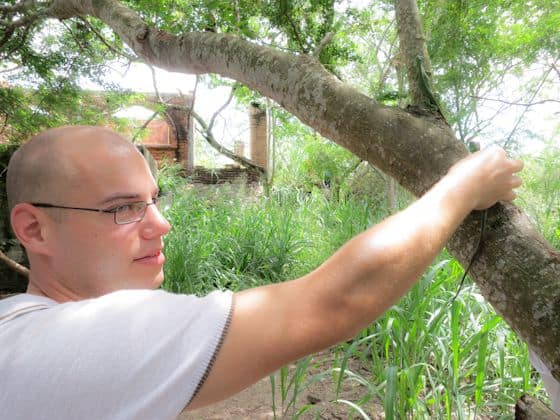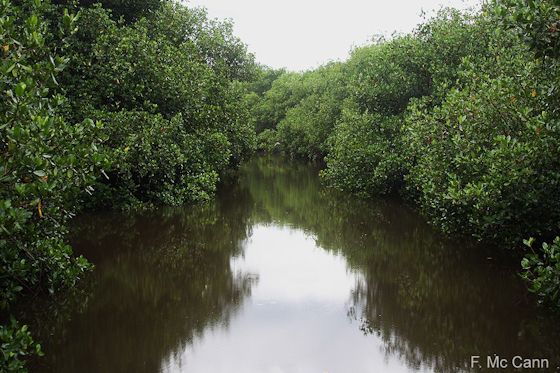I have held a crocodile in my hands. I have felt it’s ancient design, the muscles programmed to kill and crush, squirm underneath the domination of my hands. I owned that modern dinosaur, I made it mine. The crocodile in questions was two months old. But still. Score one for team Mammal.
I was at the Puerto Vallarta International Convention Center, which is in the El Salado Estuary, a protected stretch of waterway that travels through the municipality of Puerto Vallarta. It’s an urban park, but bigger. And I got to release crocodiles and iguanas born at the UMA reptile habitat into the Estuary. They will grow bigger, stronger, and probably kill many of our mammal brethren like this cute little thing trying to bite off my pinky finger.
The interesting thing about the whole experience was that it was happening at, and in conjunction, with the Puerto Vallarta International Convention Center.
You often hear about good causes and organizations run by individuals seeking to protect the environment. Many of these groups rely on donations. This is not to say they aren’t effective or doing good work, but they are dependent on the largess of others, a generosity that could run out at any time. The goal of these organizations shouldn’t be to occupy a middle man position between the people who want to help and the people who need to be supported. It should be to create self-sustainable initiatives that will continue to do the mission, and fight the good fight, even if the economy goes in the tank or donations start flooding to other areas that the public sees as more important. Small eco-tourism initiatives in developing countries often embrace this model. Sometimes started by foreigners, sometimes started locally, they often seek to to profit from wildlife resources while maintaining them and sharing the indigenous people’s local traditions while creating jobs for those same people. The government of Puerto Vallarta gets this idea, and the whole structure and relationship of the El Salado Estuary and the Convention Center exemplifies this ideal.
When I saw that my press tour would be headed to an animal sanctuary in Puerto Vallarta, Mexico, I wasn’t super excited. But then I saw that we would be visiting the Puerto Vallarta International Convention Center, which was in the animal sanctuary. I assumed this was a misprint. This is a facility that has held a basketball tournament, concerts, and trade shows with thousands of attendees. How could it be in a national park? And the national park features the following.
“It consists of a surface area to be protected of 168-96-50 hectares, out of which nearly 135 hectares are comprised of mangrove and marsh vegetation, and the rest are comprised of two remnants of tropical semi-deciduous forest surrounded by sequences of elements of water and underwater vegetation, a thorn forest, and secondary vegetation.
Its connection to the ocean is permanent through a channel that is nearly 20 meters wide, 3 meters deep, and 2 kilometers long that leads to the port’s bay. Its landscape and habitat characteristics are favorable to the migratory birds and the development of the biological cycle of the mammals and reptiles, such as the river crocodile.” – Sitio Oficial del Estero del Salado
When we arrived, I got it. The convention center is a thoroughly modern, US$43 million “green” building. Opened in 2009, this place has nine “halls” that can accommodate thousands of visitors. All the newest green building practices were used. Still, though, I was a bit skeptical. After all, NOT constructing a huge building is more green than even the greenest building. But after wandering around and hearing the pitch, I was sold on the rather unconventional arrangement.
Before the park was created, the locals used a section of the land as the dumping ground. This was not some agricultural compost pile. This was a straight-up dump. When the land was appropriated for government use to build the sanctuary, the government had to decide what to do with the mess now in the middle of a national park. So they decided to build a state-of-the-art convention center and use it to create a self-sustaining national park maintenance and care plan. All of the profits from the center’s diverse events get to be put toward protecting and improving the park and making sure the over 100 species of birds, 30 species of amphibians, and ten species of mammals will be protected.
The park and the center get thousands of visitors a year. Many come for the events and stay for the beautiful beaches, scenery bird watching, and hiking. It’s a great way to get people to see the benefits of government projects that combine the best of the usually contradictory concepts of capitalism, government investment, and environmental stewardship. Just ask delegates from the World Economic Forum.
This is how the government can get involved with small Eco-tourism initiatives and use its considerable resources to create investments that lead to sustainable environmental practices. This is a good thing, even if there will be more terrifying crocodiles.
